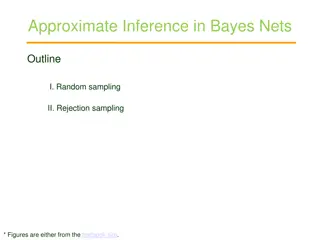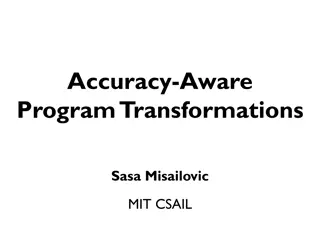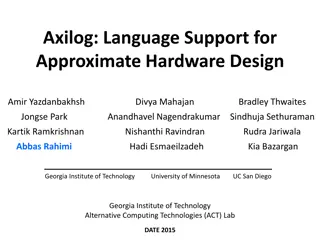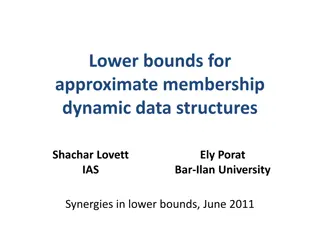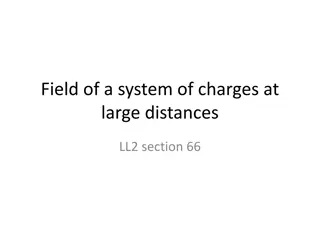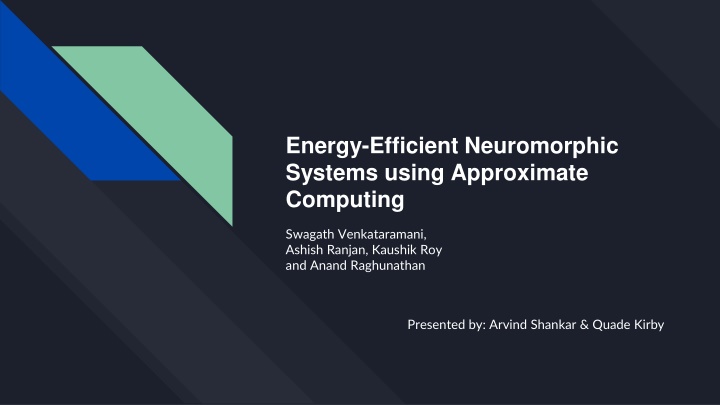
Efficient Neuromorphic Systems Through Approximate Computing
Explore how utilizing approximate computing in neuromorphic systems can enhance energy efficiency without compromising quality. This approach involves resilience characterization, neural network training methods, and the use of AxNN for optimization.
Download Presentation

Please find below an Image/Link to download the presentation.
The content on the website is provided AS IS for your information and personal use only. It may not be sold, licensed, or shared on other websites without obtaining consent from the author. If you encounter any issues during the download, it is possible that the publisher has removed the file from their server.
You are allowed to download the files provided on this website for personal or commercial use, subject to the condition that they are used lawfully. All files are the property of their respective owners.
The content on the website is provided AS IS for your information and personal use only. It may not be sold, licensed, or shared on other websites without obtaining consent from the author.
E N D
Presentation Transcript
Energy-Efficient Neuromorphic Systems using Approximate Computing Swagath Venkataramani, Ashish Ranjan, Kaushik Roy and Anand Raghunathan Presented by: Arvind Shankar & Quade Kirby
Related Work to be Influenced Efficient neuromorphic systems Approximate computing Custom architectures optimized for computation and communication patterns NN implementations on GPUs Leverage intrinsic resilience and approximate computing to construct NNs Replacing expensive functions Voltage overscaling Benefits by exploiting NN properties to maximize results
NEURAL NET TRAINING METHODS Forward Propagation Backpropagation Evaluating the outputs of the NN Inputs are fed to neurons in the first layer Eventually completed for every layer of the NN Stochastic Gradient Descent Redistributes the error at the output backwards into the NN Quantifies the error contributed by each neuron
APPROXIMATE NEURAL NETWORKS (AxNN) 1. Backpropagation to characterize the importance of each neuron in the NN 2. Replace less-significant neurons w/ approximate versions that are more energy- efficient Uses precision scaling 3. Adapt weights by incrementally retraining network
APPROACH AND DESIGN METHODOLOGY Design Approach: Improving energy efficiency with acceptable lose to quality Resilience characterization Approximate designated neurons Incremental retraining of network with approximated neurons
APPROACH AND DESIGN METHODOLOGY Neural Network Resilience Characterization: Backpropagate, then sort neurons based on average error contribution Predetermined threshold used to classify neurons as resilient or sensitive Note: network parameters not adjusted in this training step
APPROACH AND DESIGN METHODOLOGY Approximation of Resilient Neurons: Approximate neurons are inaccurate but cost-effective hardware or software implementations of the original neuron functionality Precision scaling used to reduce bit width of inputs to neurons, improving energy efficiency
AxNN DESIGN METHODOLOGY Iteratively build AxNN by successively approximating NN in each iteration Ensure quality bounds are met Apply high-level energy model of the QC-NPE to estimate energy consumption in each layer
QUALITY CONFIGURABLE NEUROMORPHIC PROCESSING ENGINE (QC-NPE) Provides a programmable hardware platform for efficiently executing AxNNs 2D array of neural compute units (NCUs) 1D array of activation function units (AFUs) Precision control register to facilitate execution w/ different accuracies
EXPERIMENTAL METHODOLOGY QC-NPE implemented in Verilog, mapped to IBM 45nm technology Used Synopsys Power Compiler to estimate energy consumption
EXPERIMENTAL METHODOLOGY Benchmarked against 6 popular NN applications for classification & recognition Used classification accuracy as the error metric
RESULTS - ENERGY COMPARISON AxNN achieves 1.43X, 1.58X, and 1,75X improvement in application energy for different quality constraints
RESULTS - APPROXIMATION COMPARISON Compared against uniformly approximated NNs for 3 applications Naive approach where NNs that with all neurons approximated
RESULTS - RESILIENCE CHARACTERIZATION Neurons towards the edges of images become more resilient to approximation
RESULTS - RETRAINING Quality-per-energy increases with retraining
AxNN ON COMMODITY PLATFORMS Approximate software implementations of selected NNs Approximate neurons get replaced with approximate but fast piecewise linear function Runtime speedup of 1.35X with < 0.5% loss in output quality
CONCLUSION AxNN provides a method for improving energy efficiency of neural networks by approximating neurons that do not contribute to output error QC-NPE hardware platform to efficiently execute AxNNs
LIMITATIONS This paper does not mention the datasets used for evaluations - e.g. training or blind test set MNIST & Cifar can be considered toy datasets - may not generalize to other tasks Doesn t discuss any methods to counteract overfitting How is this method of approximating neurons any better/different compared to dropout?
QUESTION 1 What training method do AxNNs use to classify neurons as sensitive or resilient? A. B. C. D. Back Substitution Forward Propagation Backpropagation Genetic Algorithms
QUESTION 2 Which of these components do NOT make up a Quality Configurable Neuromorphic Engine(QCNPE)? A. B. C. D. AFU E. MUX F. LIFO G. MCU FIFO NCU LUT





